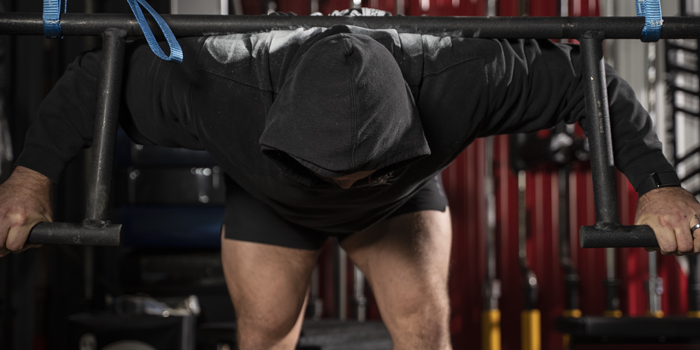
If you poll your local powerlifting gym and ask them what mobility training means, they’re going to say it has to do with stretching, foam rolling, or folding oneself into a pretzel.
Are they wrong? Not quite. Our industry hasn’t set a good example of what it means to train for mobility.
By definition, mobility is one’s ability to express movement freely. Thus, for training purposes, mobility is your ability to move. Taking it one step further, having good mobility means you have access to most of your musculoskeletal system, and you can efficiently use it.
Everything you do in the gym is mobility training, but not everything you do in the gym gives you better mobility.
Functional Training (FT): An Attempt At Mobility Training
The standard training model attempts to simplify exercise programming by suggesting that the human body has a patterned movement system, so we should exemplify those movements during training.
We squat a lot in our day-to-day life, so you should train squats in the gym. You pick stuff up and put it down a lot, so deadlifts should come in handy. You know the drill.
RELATED: 4 Hacks to Prevent Back and Hip Overuse Injuries
According to most coaches’ interpretation of FT, if you get good at pattern-based movements, by and large, you’ll be more physically prepared for life.
But, the human body does not recognize patterns; it responds to inputs and acts accordingly.
The Specificity Principle
It’s a principle you know well, even if you’re unfamiliar with training jargon. In our world, specificity means that an outcome is determined by the specificity of the input(s).
For example, if you want a strong, powerful bench press, you will do exercises that coincide with that goal. It would be strange if you focused on the force production of your Achilles/calves to get a better bench press, although you could make a case for it if leg drive were an issue, but I digress.
Sometimes, specific inputs have broader outcomes. Using the same example, having a solid bench press might translate into similar pressing movements (e.g., striking, grappling, overhead pressing, etc.); this is why you see a lot of crossovers when it comes to programming and training outcomes.
Ultimately, if you sprinkle in specificity with FT, you should be able to conquer your goals, whatever they may be.
Sort of.
Redefining “Function”
Your ability to move is governed by your genetics, structure (bone morphology), tissues (connective, muscle), environment, and nervous system.
Moving is complex.
Squatting in the gym may prepare you for squat-like motions outside of the gym, but a squat is only relatively transferrable to other motions that are squat-like.
If we took the time to examine the capacities of your ankles, knees, hips, spine, etc., we would find that squats don’t address all of those needs, hence why most coaches would add in deadlifts, lunges, and so on; this is the essence of FT.
The problem is this still doesn’t address all of the functions of these joints, either in isolation or in conjunction with one another. For instance, few exercises train the knees to travel over the toes (on purpose), yet we do this all the time in our day-to-day lives.
We don’t prepare the ankle to roll even though it can (and should) without immediately spraining (caveat here for traumatic injuries).
We don’t train the hip to rotate, even though that is its prime function.
Functional training should take a global musculoskeletal approach to prepare you to function as a human, and it doesn’t.
Mobility Training: Knowing Stuff Works Vs. Hoping It Does
Our industry can try to simplify programming all they want. Still, the truth is, you have a body made of joints that are meant to provide access to certain movements, either independently or interdependently.
Training the entirety of your musculoskeletal system requires a very specific approach and a fundamental understanding of your own body.
The problem isn’t you. It’s the system under which you train.
Setting aside sport specificity, how well can you move all the joints in your body to accomplish human-like stuff?
What does your ankle even do?
Can your shin rotate? Should it?
When’s the last time you trained your wrist through its full range of motion?
When’s the last time you trained your neck through its full range of motion?
Are you mobile (i.e., “functional”), or do you just think you are?
Brian has spent the last 12 years fine-tuning his skills as a coach and movement specialist to help people move and feel better. He has worked with and learned from some of the industry’s most revered coaches and personal trainers, like Adam Bornstein, Tim Skwiat, and Justin Kavanaugh. He has held multiple certifications through Functional Range Conditioning (FRC), Precision Nutrition (Pn2), ONNIT, Henselmans, and YogaFit. In 2018, Brian founded Motive Training, a personal training organization that teaches clients how to move with purpose, ensuring they have a well-rounded, functional body.










